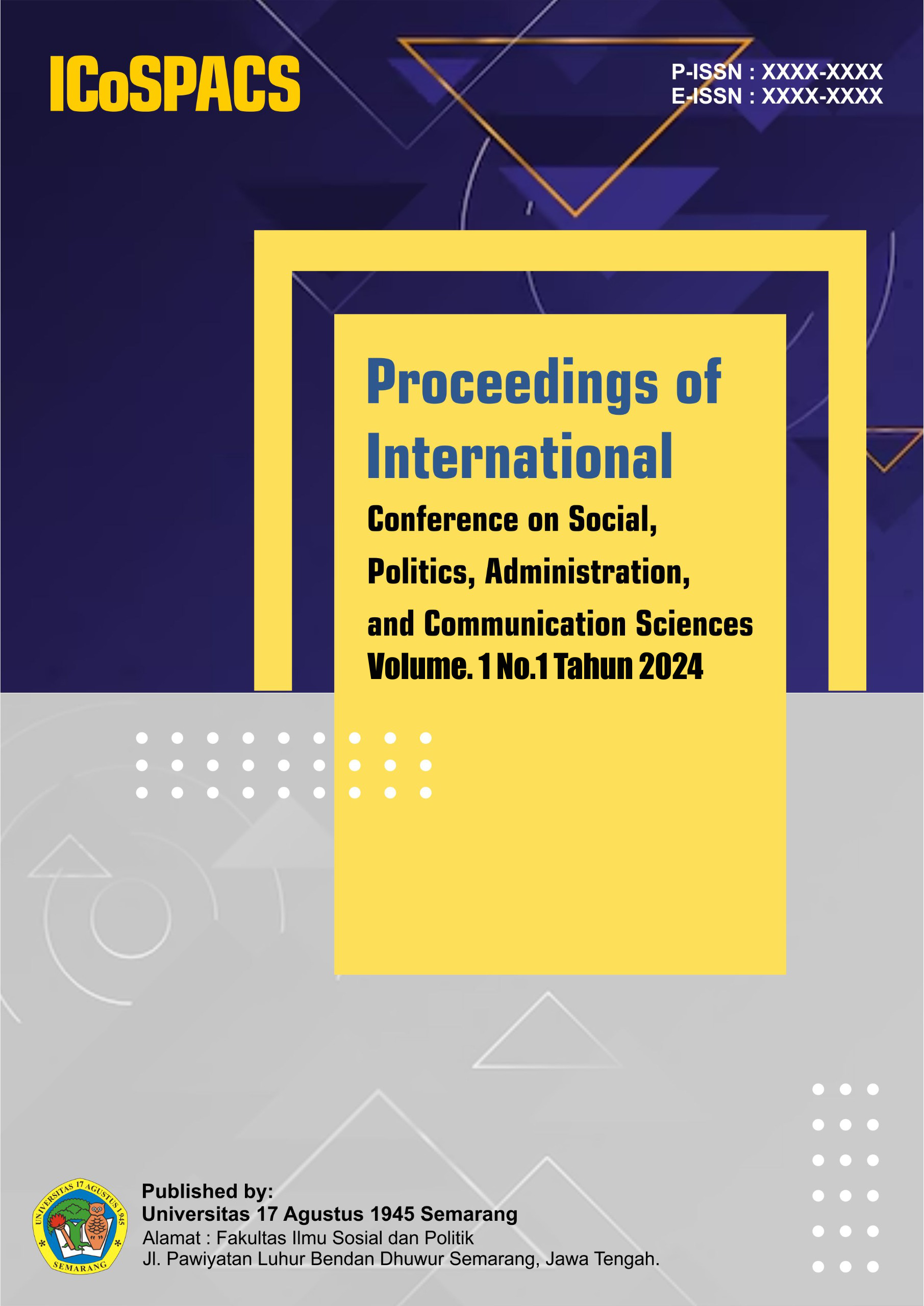Semarang City Diplomacy in Environmental Issues
Keywords:
City diplomacy, BilateralAbstract
This article aims to analyze Semarang's city diplomacy in solving environmental problems. Cities have an increasingly large role to play in this globalization era due to complex global issues, especially environmental issues. Cities are also having difficulty dealing with globalization due to the speed of population growth, economic pressures, excessive land use, and the increasing use of motor vehicles that release pollutants into the air. To address these issues, cities around the world are doing their best to find cooperative solutions through diplomacy. In addition, many national capitals cannot handle multiple tasks and, therefore, need to delegate some of their burden to other cities. In line with these objectives, this study utilizes an exploratory and descriptive qualitative research method, focusing on Semarang's diplomacy efforts. This study found that the Semarang city government has been perceived as an institution with clear political objectives that is fully committed to the practice of city diplomacy to engage directly, albeit in a limited way, in multilateral and bilateral international cooperation to find solutions to its environmental problems. The city government is no longer seen as an object of implementation of program plans formulated at the central level but also has the opportunity to formulate strategic plans or bottom-up procedures based on the needs of local communities and the suitability of the model with environmentally sustainable urban development.References
Centre for GIS and Survey Engineering. (2018). Paparan CGISE Kota Semarang. https://cgise.geodesi.ugm.ac.id/wp-content/uploads/sites/381/2018/10/Paparan-CGISE-Kota-Semarang.pdf (accessed January 20, 2021).
Chan, D. K. H. (2016). City diplomacy and “glocal” governance: Revitalizing cosmopolitan democracy. Innovation. https://doi.org/10.1080/13511610.2016.1157684
Chan, D. K. H. (2016). City diplomacy and “glocal” governance: The missing link in sustainable development. http://ic-sd.org/wp-content/uploads/sites/4/2016/06/ICSD_Submission_Dan_Koon-Hong_Chan_City_diplomacy.pdf
Constantinou, C. M., Kerr, P., Sharp, P., & Acuto, M. (2016). City diplomacy. In The Sage Handbook of Diplomacy. https://doi.org/10.4135/9781473957930.n42
Der Derian, J. (1987). Mediating estrangement: A theory for diplomacy. Review of International Studies, 13(2), 91–110.
Eckersley, R. (2010). Green theory. In International Relations Theories: Discipline and Diversity (S. S. Tim Dunne & Milja Kurki, Eds.). Oxford University Press.
Giddens, A. (2003). Runaway world: How globalization is reshaping our lives. New York: Routledge.
Gutiérrez-Camps, A. (2013). Local efforts and global impacts: A city-diplomacy initiative on decentralisation. Perspectives, 21(2), 49–61.
Hamilton, K., & Langhorne, R. (1995). The practice of diplomacy: Its evolution, theory and administration. Routledge.
Keiner, M., & Kim, A. (2000). Transnational city networks for sustainability. European Planning Studies, ZZ (R).
Kuznetsov, A. S. (2015). Theory and practice of paradiplomacy: Subnational governments in international affairs. Routledge.
La Porte, T. (2012). The impact of “intermestic” non-state actors on the conceptual framework of public diplomacy. The Hague Journal of Diplomacy, 7(4), 441–458.
Leitmann, J. (2006). Urbanization and sustainable development policy and administration. In G. M. Mudacumura, D. Mebratu, & M. S. Haque (Eds.), Sustainable development policy and administration (pp. 225-242). New York: Taylor & Francis.
Purwono, A. (2020). Diplomasi Kiai Nahdlatul ‘Ulama (NU) melalui konferensi ulama internasional. Sosio Dialektika, 5(2). https://doi.org/http://dx.doi.org/10.31942/sd.v5i2.3875
Rana, K. S. (2013). The domestic arena: All politics is local; Diplomacy is also becoming local. In Contemporary Embassy: Paths to Diplomatic Excellence.
Scholte, J. A. (2005). Globalization: A critical introduction (2nd ed.). Palgrave Macmillan.
UN-Habitat. (2016). World Cities Report 2016. https://www.unhabitat.org/wp-content/uploads/2014/03/WCR-%20Full-Report-2016.pdf
United States Environmental Protection Agency (EPA). (2012). Green building tools for tribes. https://www.epa.gov/green-building-tools-tribes
Van der Pluijm, R. (2007). City diplomacy: The expanding role of cities in international politics. Clingendael Diplomacy Papers.
Wardhani, B., & Dugis, V. (2020). Greening Surabaya: The city’s role in shaping environmental diplomacy. Journal of the Global South, 7(2), 236–258. https://doi.org/10.1163/21983534-00702005




